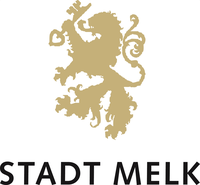Welcome to the website of the Melk Concentration Camp Memorial. Here you find all the information for your visit of the memorial and learn about the history of this satellite concentration camp and the association “MERKwürdig. Eine Veranstaltungsreihe wider Gewalt und Vergessen” (reMARKable – event series against violence and oblivion).
Opening times
The visit of Melk concentration camp memorial is possible every day.
Upon presentation of a valid photo ID you get the key at the entrance of the Melk barracks: "Freiherr Karl von Birago Pionierkaserne", Prinzlstrasse 22.
For guided visits and further information please contact us via info@zhzmelk.at
Science and research
If you need support for a paper or scientific project (seminar paper, bachelor thesis, master thesis) concerning details of the history of the satellite concentration camp of Melk or other contemporary historical topics regarding the area of Melk, we would be pleased to assist you.
Youth projects
The Mauthausen Committee Austria (MKÖ) offers numerous tour and education programs especially for teenagers. Among them are civil courage trainings which should encourage young people to become helpers instead of remaining uninvolved bystanders. Further information and reservation available under www.zivilcourage.at .
Access and parking
You can reach the town of Melk by train, coming from both Vienna or Linz. It is a 12-15-minute walk from Melk train station to the concentration camp memorial. There are several parking spaces along the Dorfnerstraße as well as on the Schießstattweg.
Guided visits
Guided visits in the memorial by our qualified guides are possible (in German language) for different target groups (students from 14 years on, apprentices, associations, political interest groups, enterprises, etc.). To offer the best tour for your individual needs, it is necessary to make a prior reservation – by e-mail or by phone. Please note that while there is no minimum number of guests, the group should not have more than 25 persons. For larger groups we try to provide additional guides.
Contact
Wolfgang Fehrerberger, BA
Mobile: +43 681/205 78 336
E-Mail: wolfgang.fehrerberger@mauthausen-memorial.org
History
Between 21st April 1944 and 15th April 1945 a concentration camp operated on the grounds of the pioneer barracks of Melk. With approximately 14.390 prisoners who were forced to work here in the course of one year it was one of the biggest satellite camps of Mauthausen concentration camp and the biggest satellite camp in Lower Austria.
The camp prisoners came from more than 20 countries and their work consisted primarily of digging an underground tunnel complex in the Wachberg hill which is situated between Melk and Loosdorf. In the tunnels created by the camp prisoners the Steyr-Daimler-Puch Company produced war material (mainly ball bearings) as of late fall of 1944.
At least 4.874 camp prisoners died in the camp or at the construction site, and more than 3.500 corpses were burned in the crematorium which was built for that reason in the fall of 1944. The former crematorium building was declared a public monument in 1962 and has been the home of the Melk concentration camp memorial ever since. The current contemporary historical exhibition in the rooms of the memorial was created by Bertrand Perz and Gottfried Fliedl in the early 1990s. Since 1994 the association “MERKwürdig. Eine Veranstaltungsreihe wider Gewalt und Vergessen” (reMARKable – event series against violence and oblivion) has been in charge of the memorial. MERKwürdig also regularly organizes events with which they strive to deal in a critical way with topics like violence, racism and right-wing extremism.
Under “downloads” you find references and important general reading material (available in German, English, French and Italian) concerning the history of the satellite camp of Melk for a free download.
Establishment of the camp
As producer of extremely important war material the Steyr-Daimler-Puch company was a high priority target for the Allies.
Background
Along with the “Anschluss” in March 1938 the German Reich started also in Austria to quickly adapt and expand the industry for armament purposes.
The concentration camp prisoners in Melk
The 14.390 all male prisoners who were forced to work in the satellite camp of Melk came from more than 26 different countries.
Forced labor
Transports of prisoners from Mauthausen concentration camp to Melk were organized according to the needs of the building companies who constructed the tunnel complex near Roggendorf.
The fatalities of the satellite concentration camp of Melk
Within a year 4.874 prisoners lost their lives in the satellite concentration camp of Melk.
Evacuation of the camp
Until the end the SS tried by all available means to prevent the liberation of surviving concentration camp prisoners by the Allied forces.
Follow up I – legal punishment
Already in the first days after the liberation of Mauthausen concentration camp the US authorities began investigating potential Nazi criminals and imprisoned thousands of SS members and former prisoner functionaries in detention camps.
Follow up II – memorial and tunnels
Upon their arrival in Melk the Red Army found the former satellite concentration camp deserted and used the grounds for a short time as a Soviet military base.
Places of remembrance in the area
In the region around Melk Memorial and the museum ERLAUF REMEMBERS there are a few visible, but also lesser known and sometimes nearly forgotten places of remembrance.











